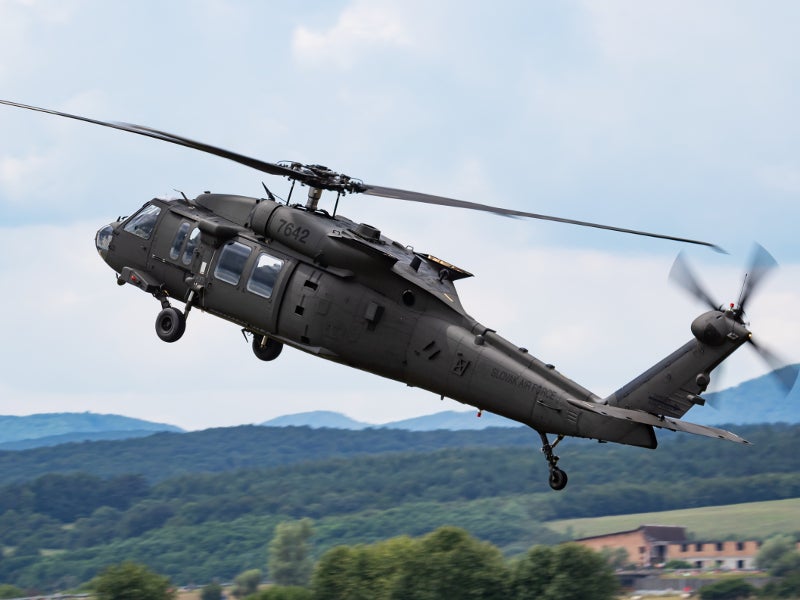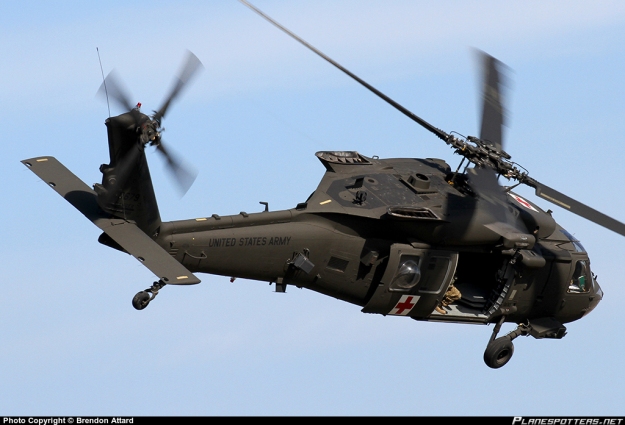Recognizing the Mechanics and Design Behind Uh 60 Helicopters
The UH-60 helicopter, generally recognized as the Black Hawk, stands as a peak of contemporary rotorcraft modern technology, personifying a mix of robust engineering and complex technicians. As we peel off back the layers of the UH-60's design, a globe of intricate systems and thorough design comes to light.
Background of UH-60 Helicopters
The background of UH-60 helicopters traces back to the late 1970s when the United States Army sought a innovative and functional utility helicopter to replace its aging fleet. In action to this need, the Sikorsky Airplane Corporation developed the UH-60 Black Hawk helicopter. Introduced in 1979, the UH-60 quickly became a staple in military operations due to its excellent capabilities.
The UH-60 was developed to master a variety of objectives, consisting of army transport, medical evacuation, digital war, and unique procedures. Its capacity to adapt to different duties made it a valuable property to the U.S. uh 60. Military and various other army pressures all over the world
Throughout the years, the UH-60 platform has gone through a number of upgrades and variants to improve its efficiency and keep pace with progressing objective requirements. These helicopters have actually seen considerable solution in disputes such as the Gulf Battle, Afghanistan, and Iraq, showcasing their dependability and versatility in varied operational environments. The UH-60's abundant history is a testimony to its enduring tradition as a premier utility helicopter.

Engine and Power Systems
Utilizing advanced propulsion technology, UH-60 helicopters are equipped with advanced engine and power systems to ensure optimal efficiency and dependability in a series of operational circumstances. The UH-60, commonly referred to as the Black Hawk, is powered by 2 General Electric T700-GE-701D engines, each qualified of delivering up to 1,940 shaft horse power. These turboshaft engines supply the essential drive for the helicopter to bring out its missions efficiently, consisting of army transportation, medical evacuation, and battle support.

Blades System and The Rules Of Aerodynamics
Just how do the rotor system and aerodynamics of UH-60 helicopters contribute to their functional performance and trip abilities? The rotor system of the UH-60 helicopter plays a crucial duty in supplying lift and propulsion.
Aerodynamics also play a key role in the efficiency of UH-60 helicopters. The streamlined fuselage and blades blade style reduce drag, permitting the helicopter to attain greater speeds and better gas effectiveness. The aerodynamic layout of the UH-60 likewise adds to its capacity to run in diverse ecological conditions, including high elevations and hot temperatures.
Avionics and Trip Control Systems

In its intricate coordination with the blades system and aerodynamics of UH-60 helicopters, the avionics and trip control systems form a critical network of innovations forming the aircraft's functional abilities. Avionics incorporate the electronic systems made use of for interaction, navigating, and keeping an eye on numerous aircraft features. In the UH-60, these systems consist of digital screens, interaction radios, GPS navigating, climate radar, and autopilot systems. These avionics systems supply essential info to the pilots, boosting situational awareness and making certain efficient and risk-free procedure of the helicopter.
The flight control systems of the UH-60 are accountable for equating the pilot's inputs right into the ideal changes to the blades system, guaranteeing steady trip and maneuverability. These systems are composed of hydraulic actuators, servos, and computer systems that function with each other to regulate the tail and major blades, along with various other trip control surface areas. By specifically taking care of the helicopter's trip characteristics, these systems make it possible for pilots to execute a wide variety of missions, from transport and search-and-rescue to fight operations, with precision and confidence.
Role and Applications in Aviation
Avionics systems in UH-60 helicopters include an array of electronic systems that help in navigation, interaction, monitoring, and managing numerous aircraft features. These systems consist of digital display screens, autopilot systems, communication check my site radios, General practitioner navigation devices, and climate radar. Furthermore, these systems include safety functions such click this link as auto-pilot modes, terrain recognition warning systems, and stability enhancement systems to enhance the overall security and functional capabilities of the UH-60 helicopters in different objectives, consisting of troop transport, medical discharge, search and rescue, and aerial firefighting.
Conclusion
In conclusion, the UH-60 helicopter is a flexible aircraft with a rich history and advanced engineering. Its engine and power systems, rotor system, aerodynamics, avionics, and flight control systems all function with each other to make it a reliable and efficient machine.
In its elaborate coordination with the rotor system and the rules of aerodynamics of UH-60 helicopters, the avionics and flight control systems create a vital network of modern technologies shaping the aircraft's functional capacities.The trip control systems of the UH-60 are liable for converting the pilot's inputs into the appropriate adjustments to the rotor system, making certain stable flight and ability to move. Avionics systems in UH-60 helicopters include a variety of digital systems that aid in navigation, communication, surveillance, and regulating numerous aircraft functions. In addition, these systems integrate safety and security functions such as auto-pilot settings, surface awareness advising systems, and stability enhancement systems to improve the general security and operational Read More Here capabilities of the UH-60 helicopters in different goals, consisting of troop transportation, medical evacuation, search and rescue, and airborne firefighting.
Its engine and power systems, rotor system, the rules of aerodynamics, avionics, and trip control systems all function with each other to make it a effective and reputable machine.